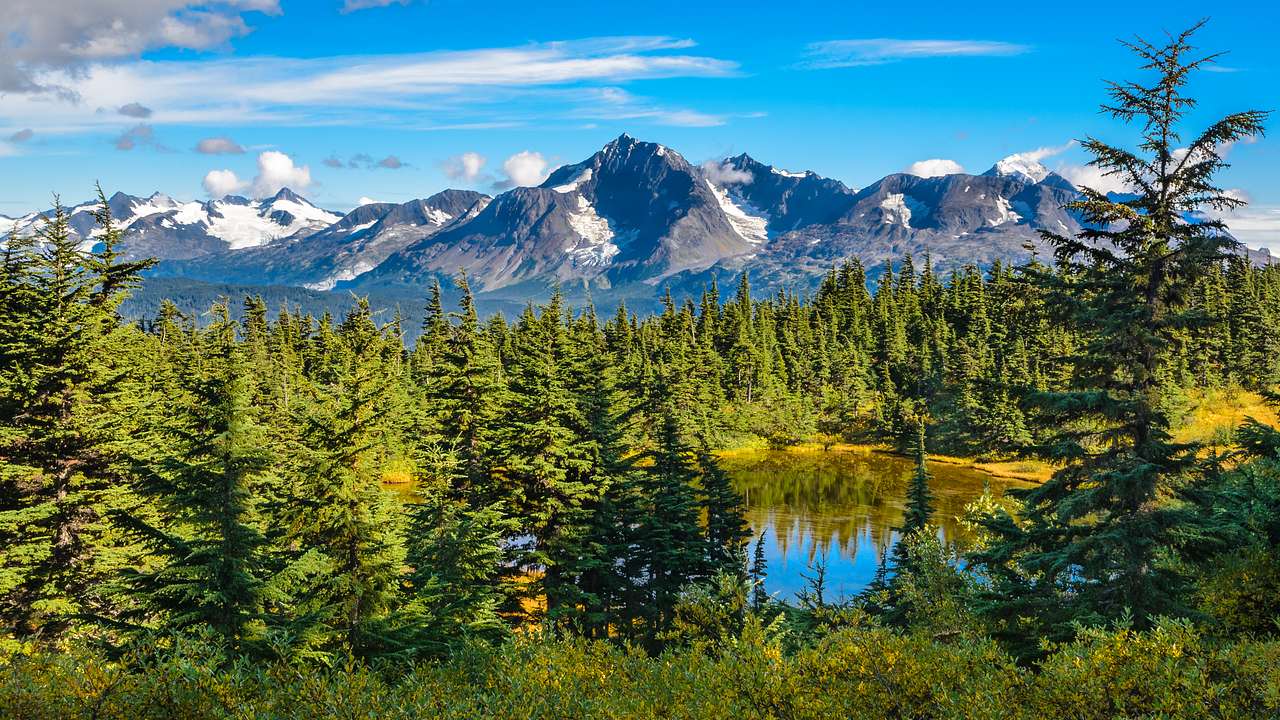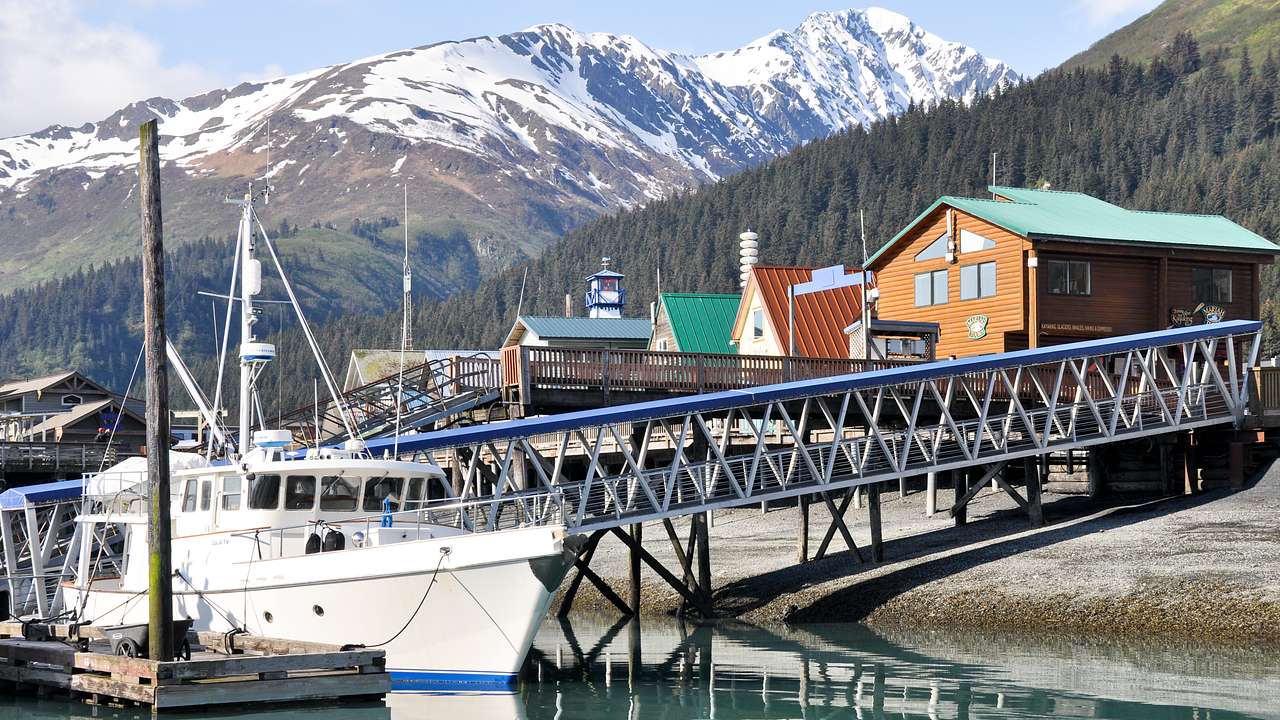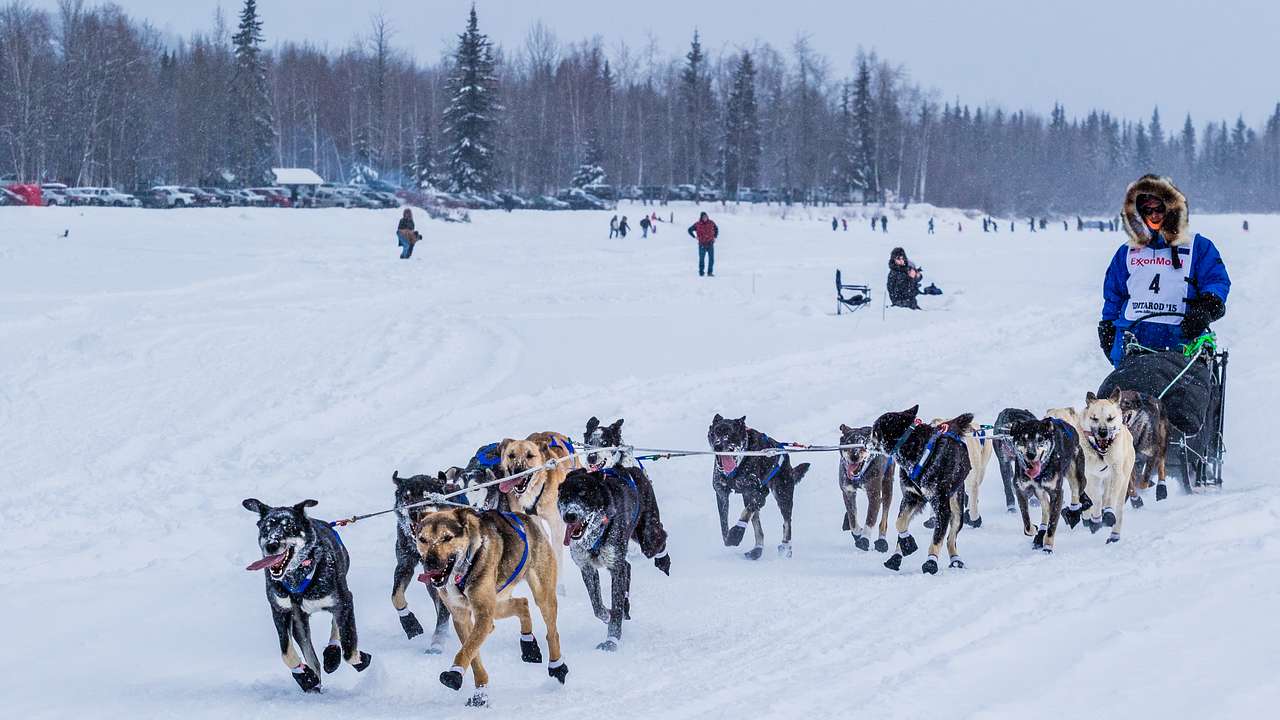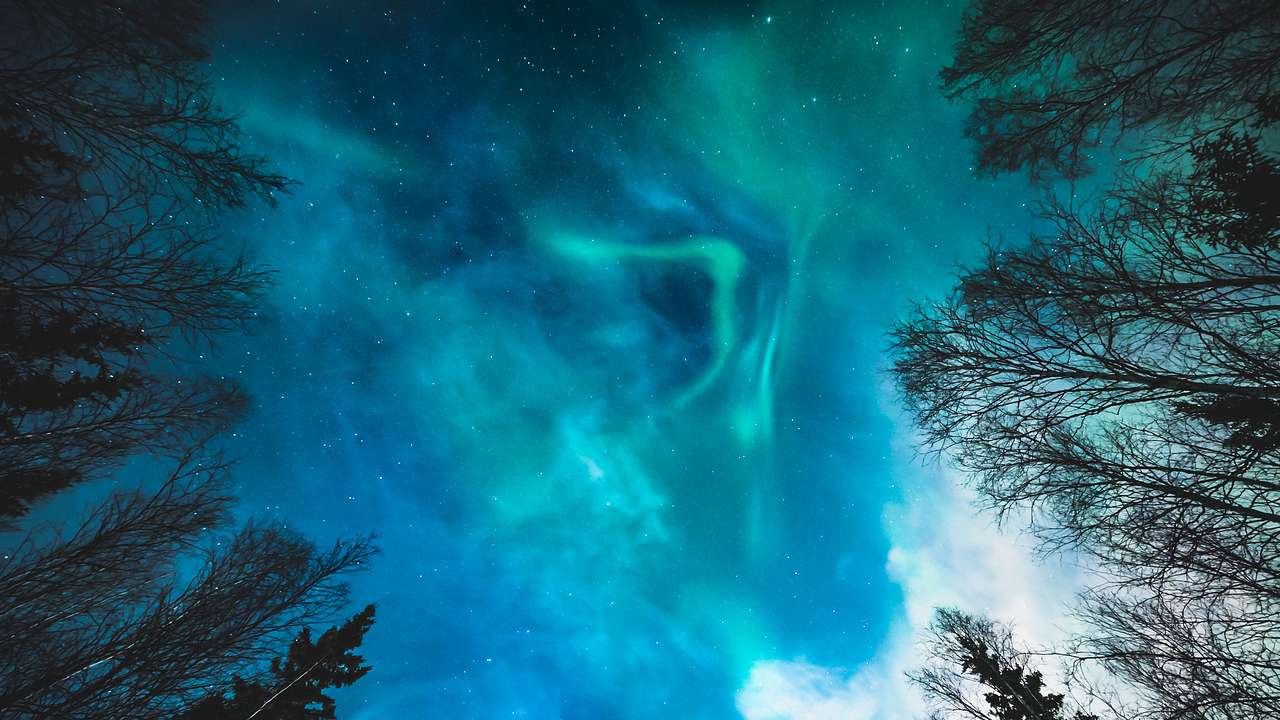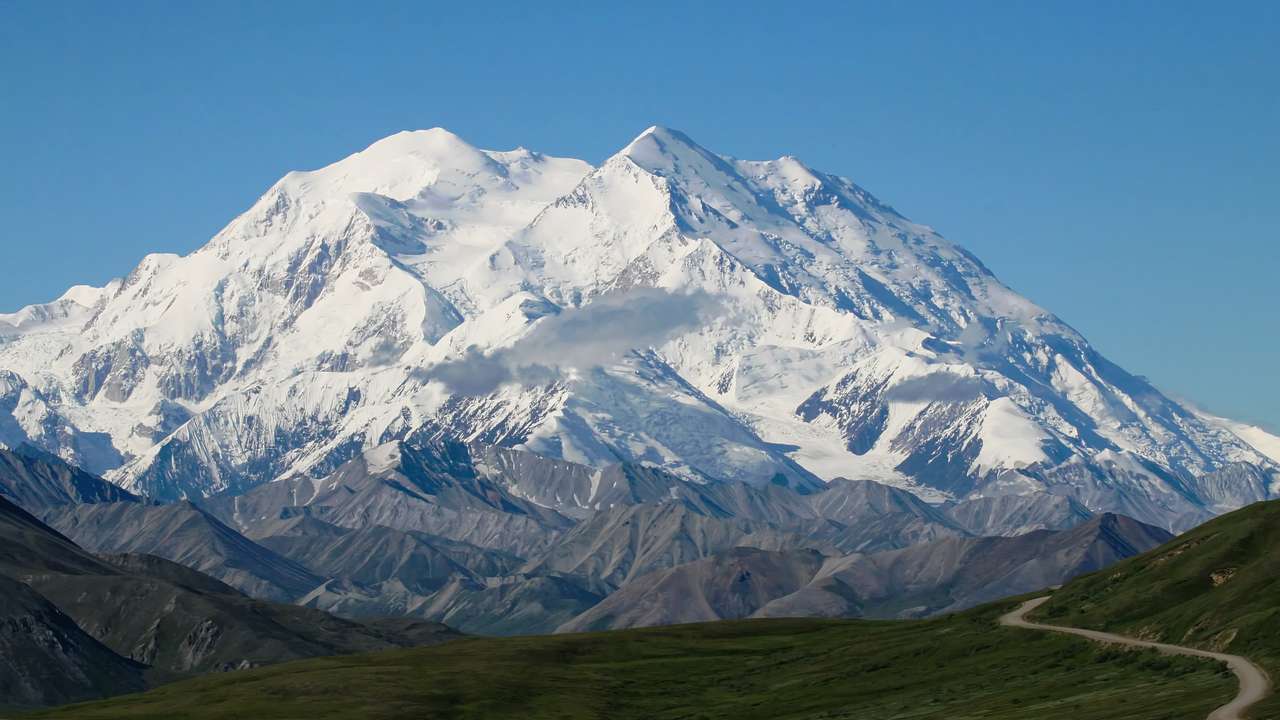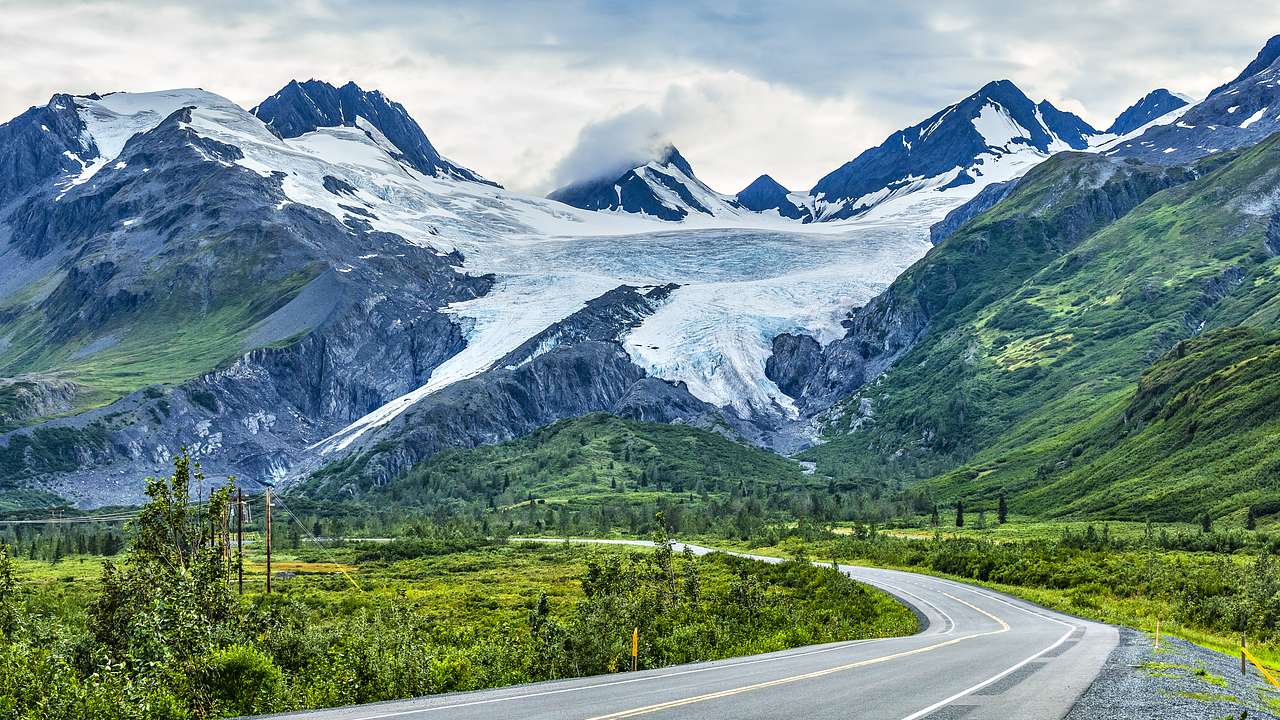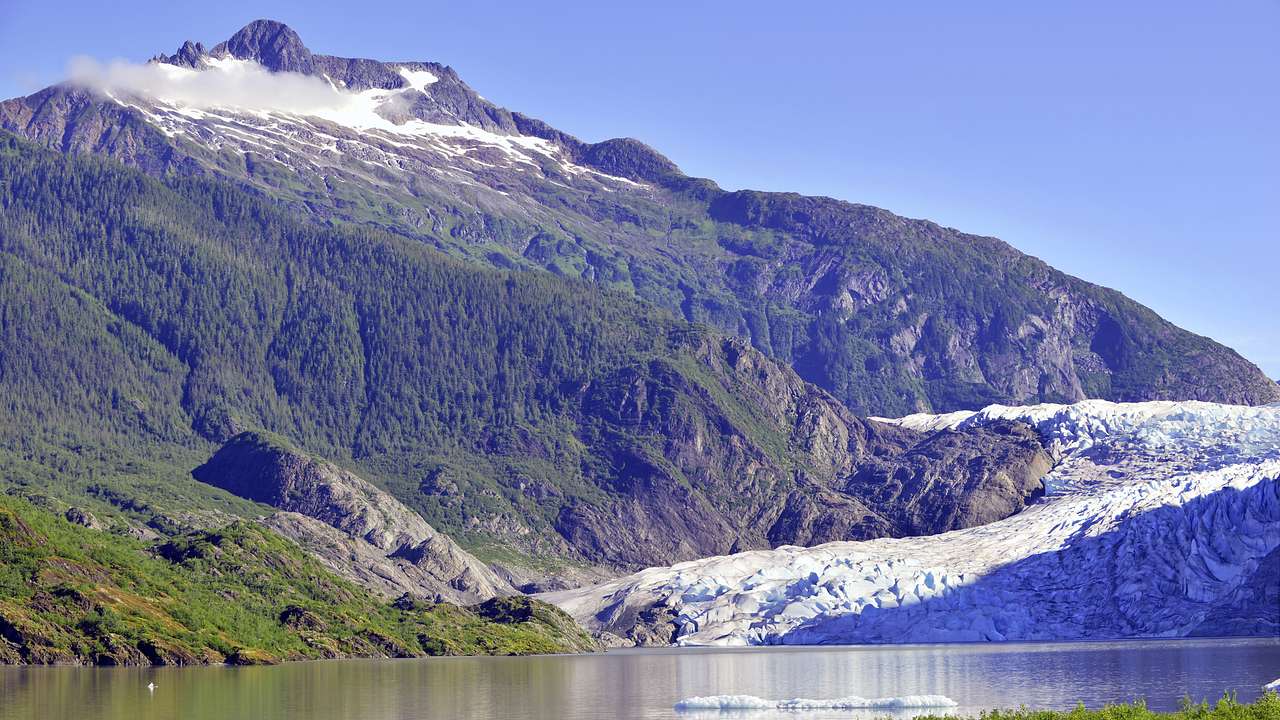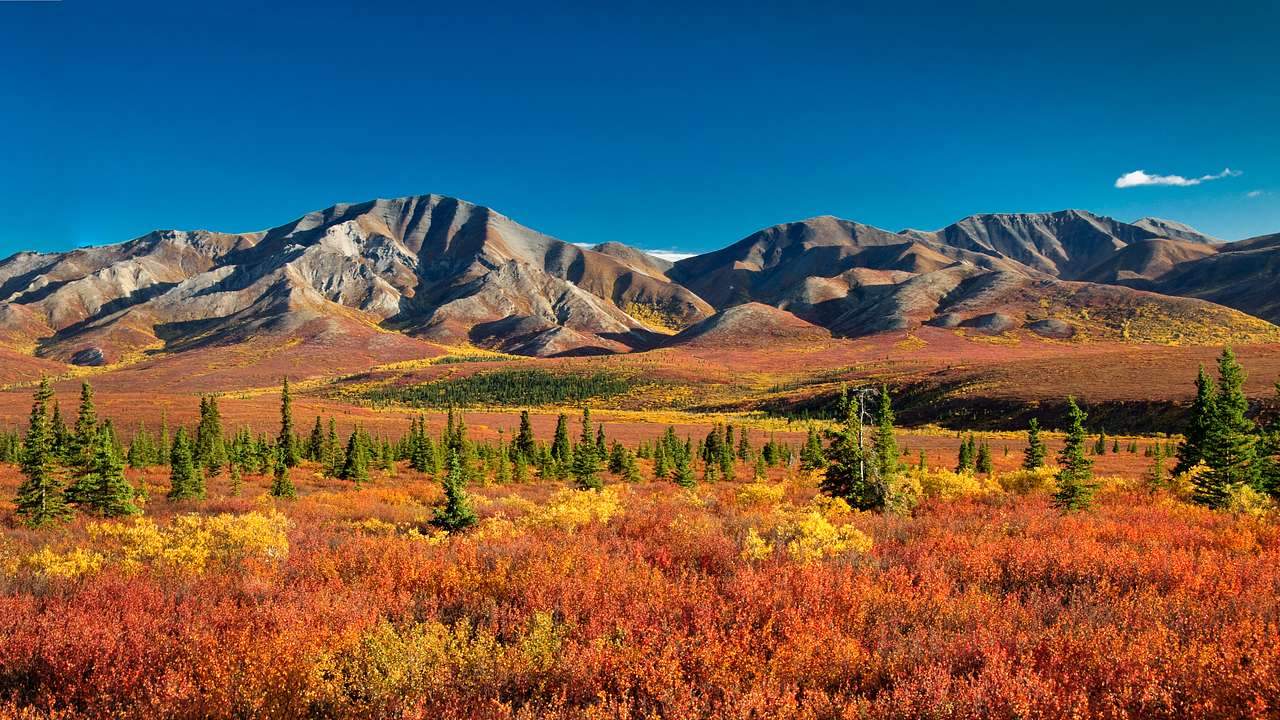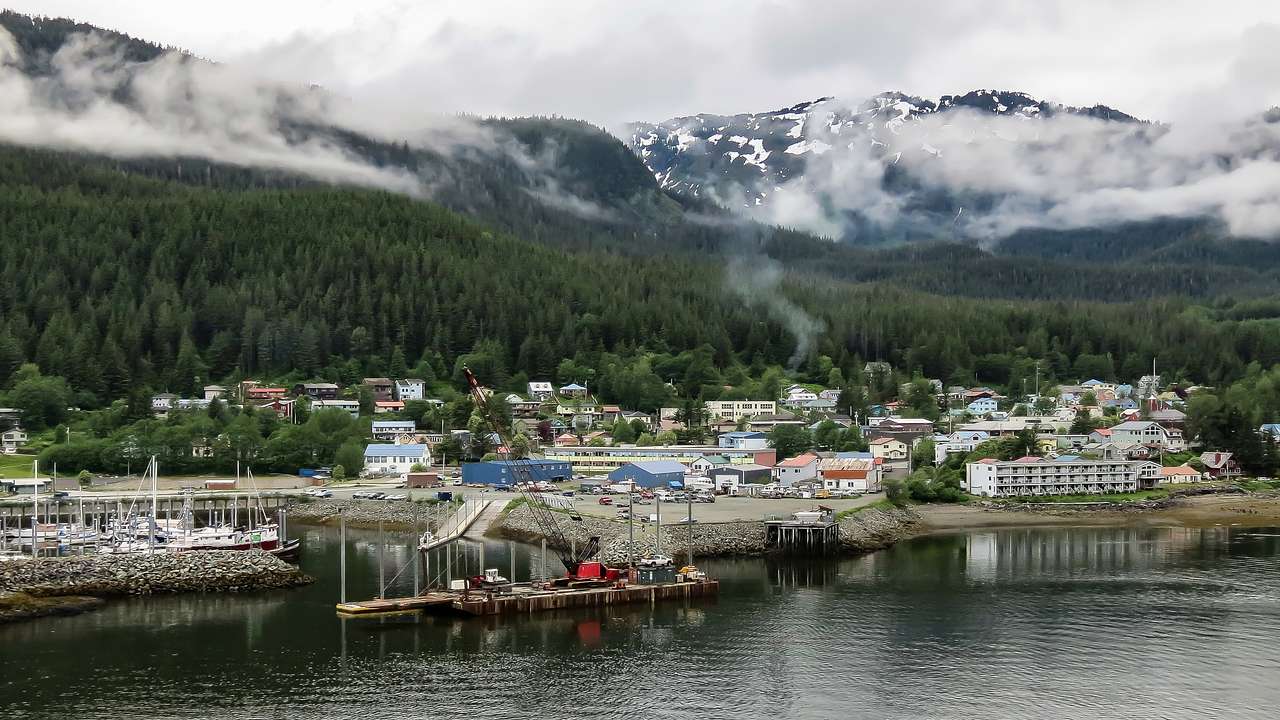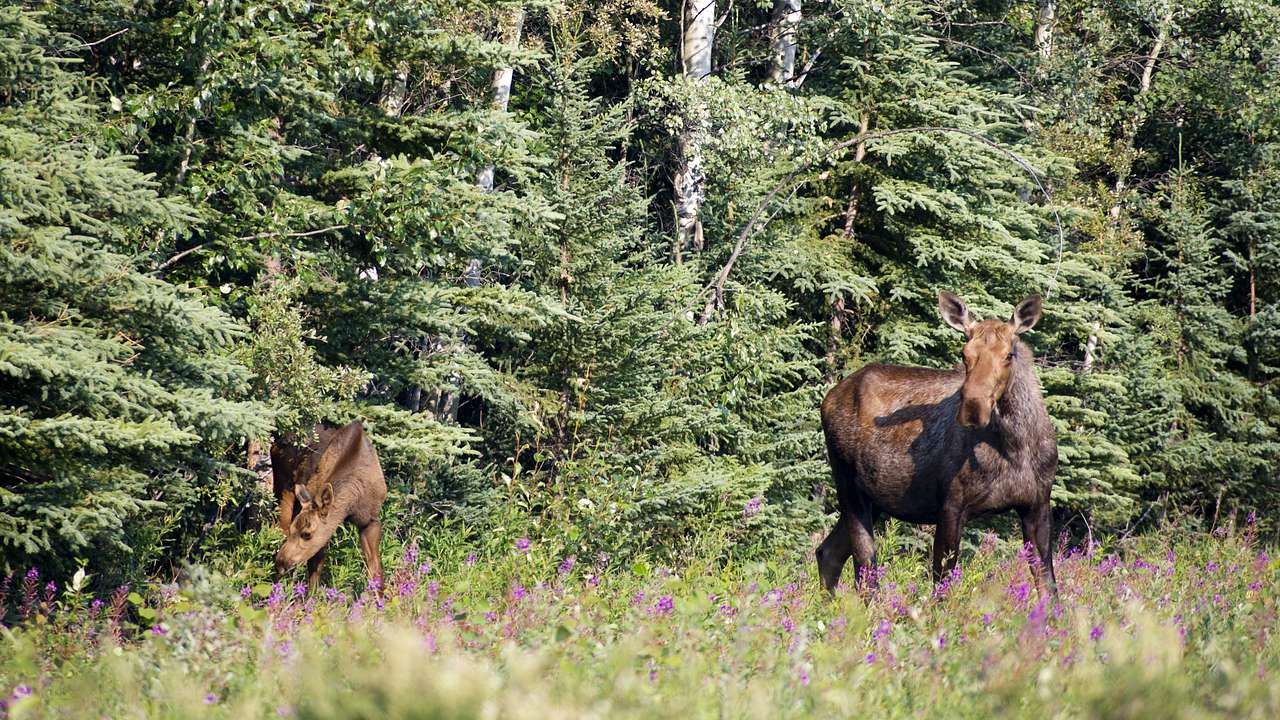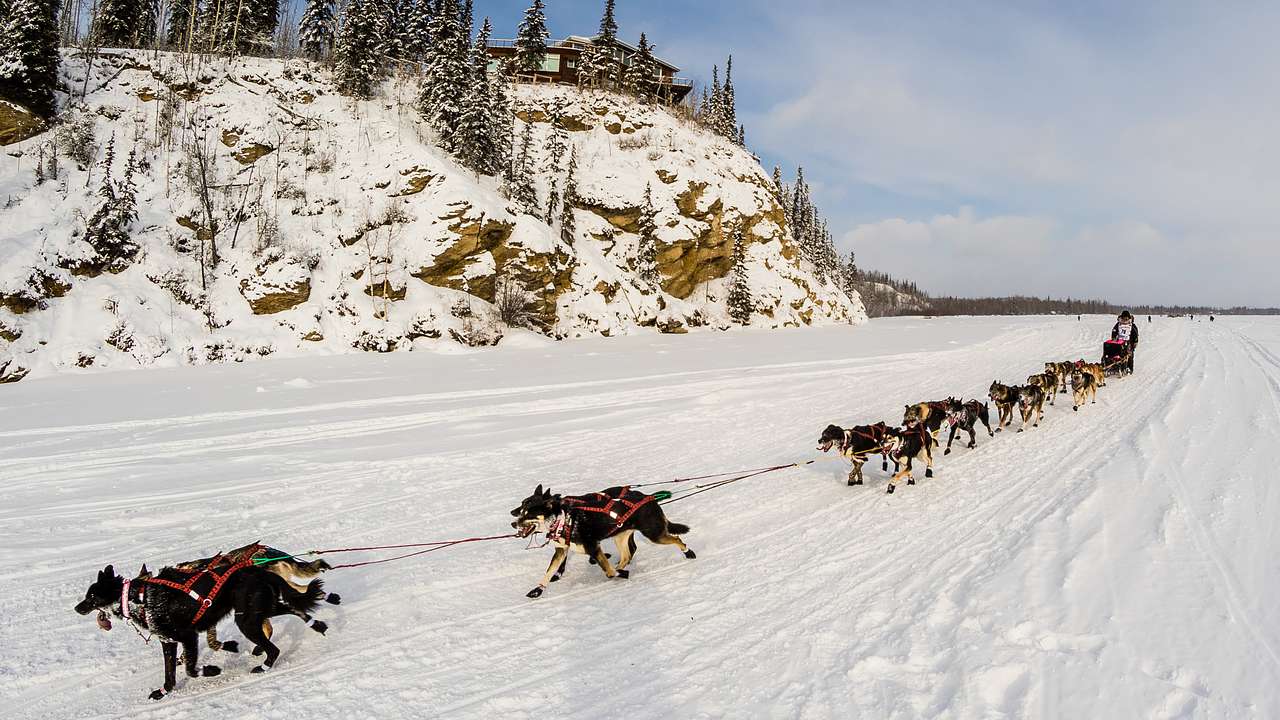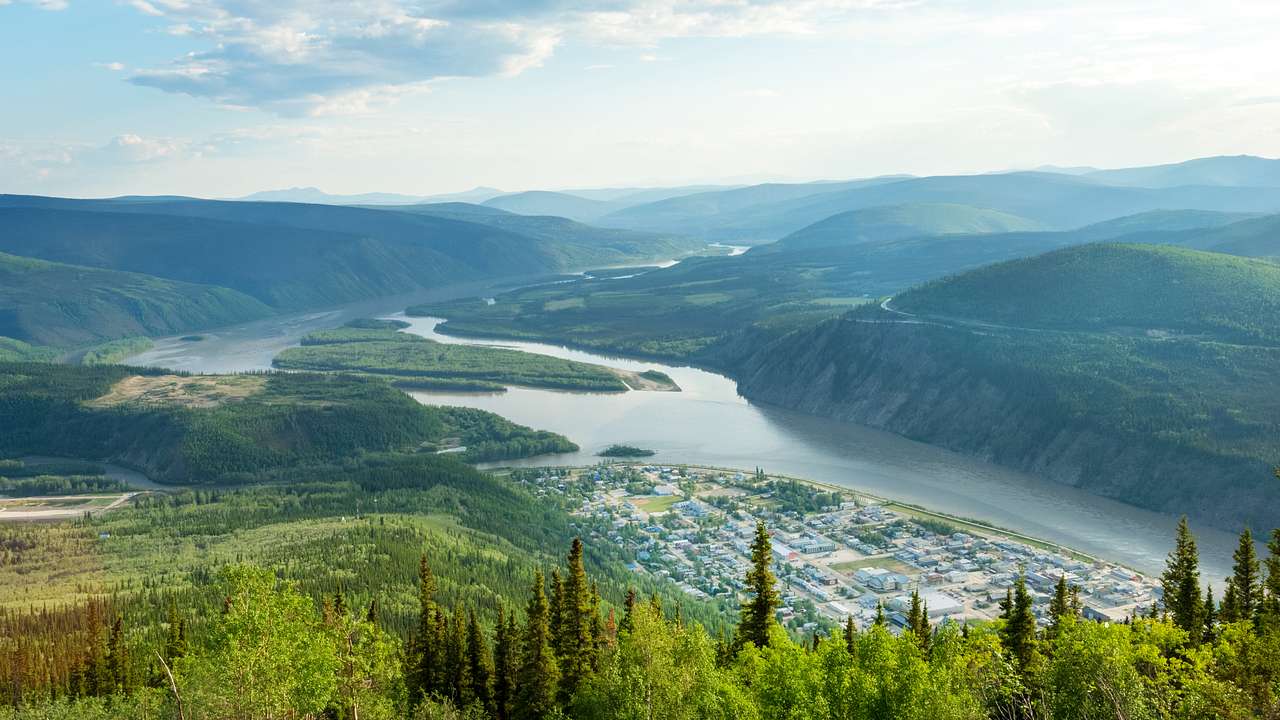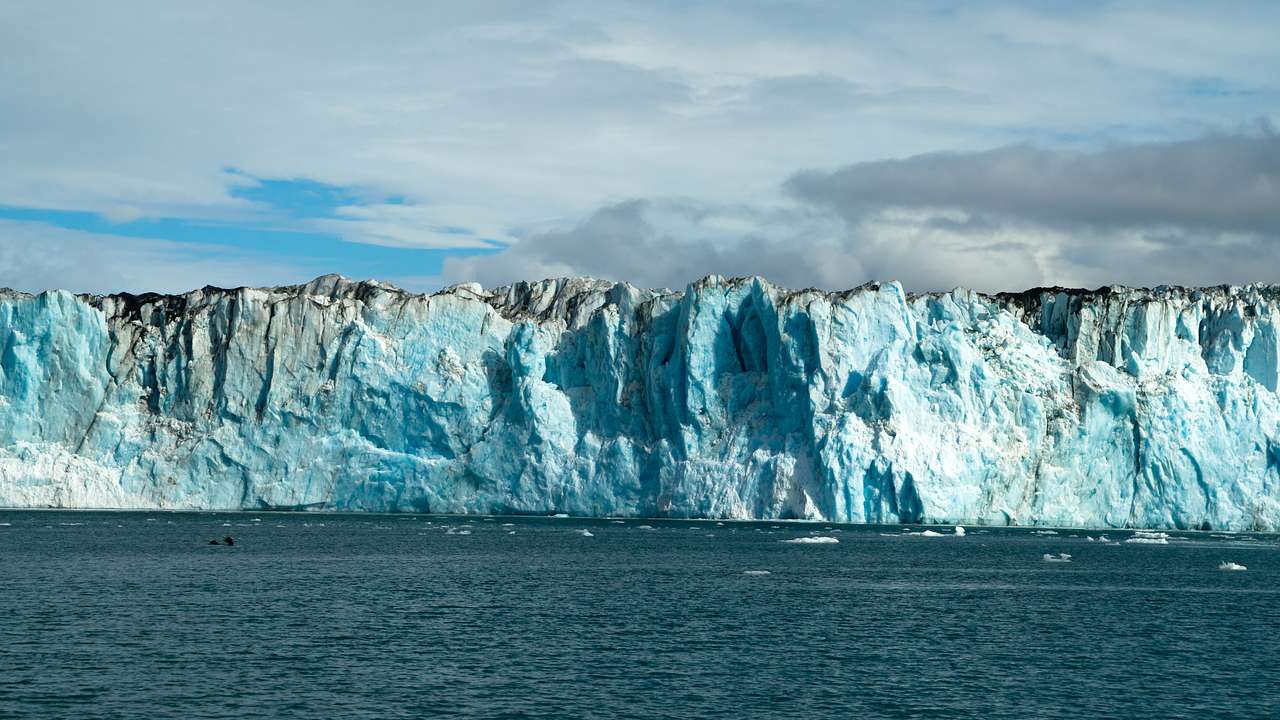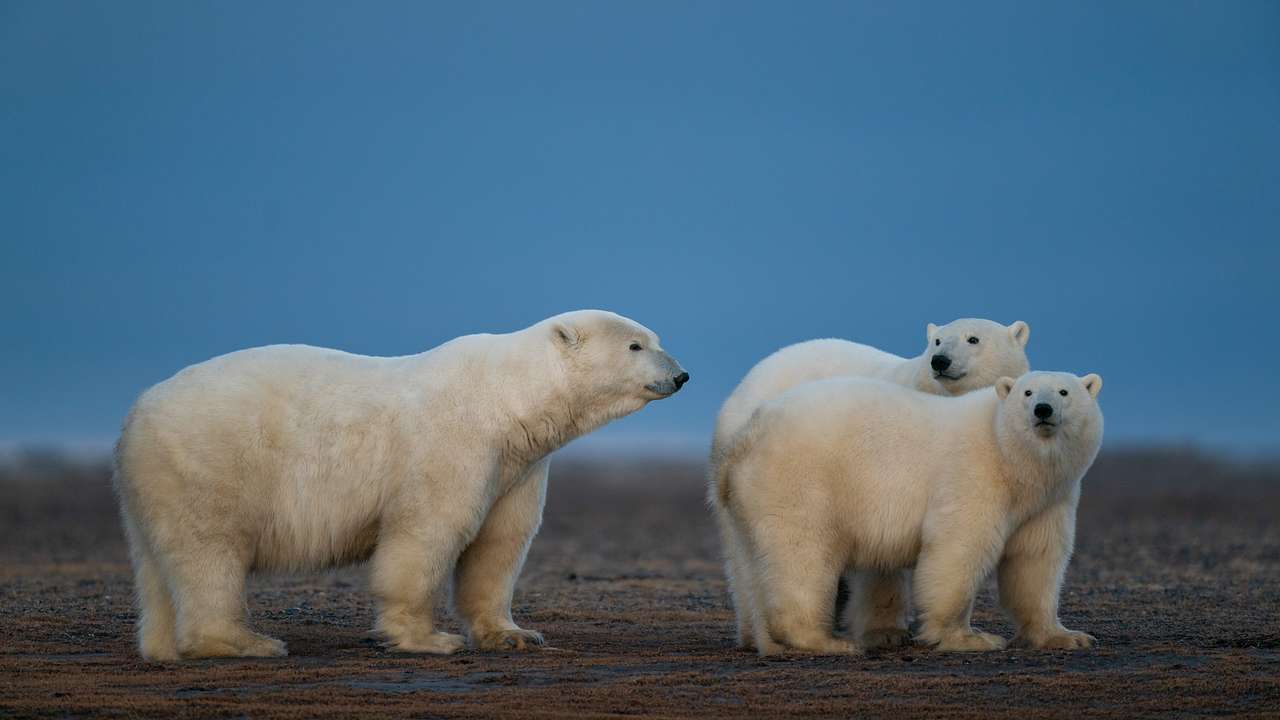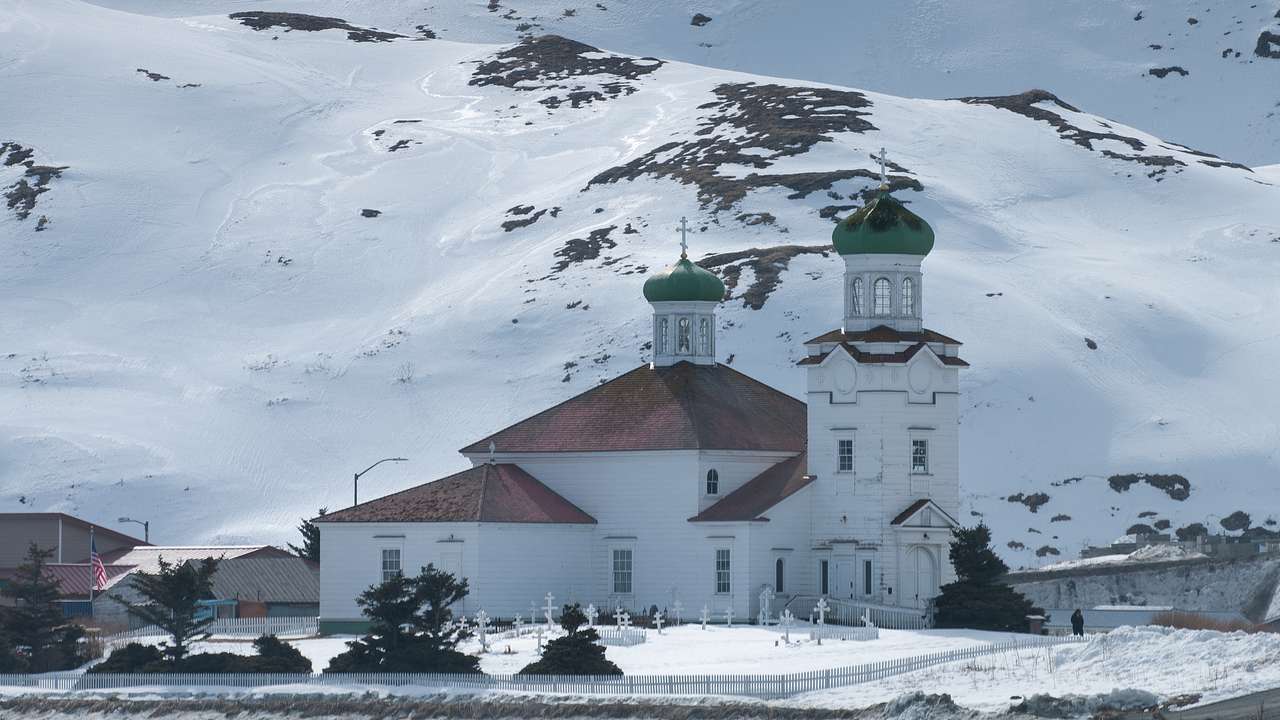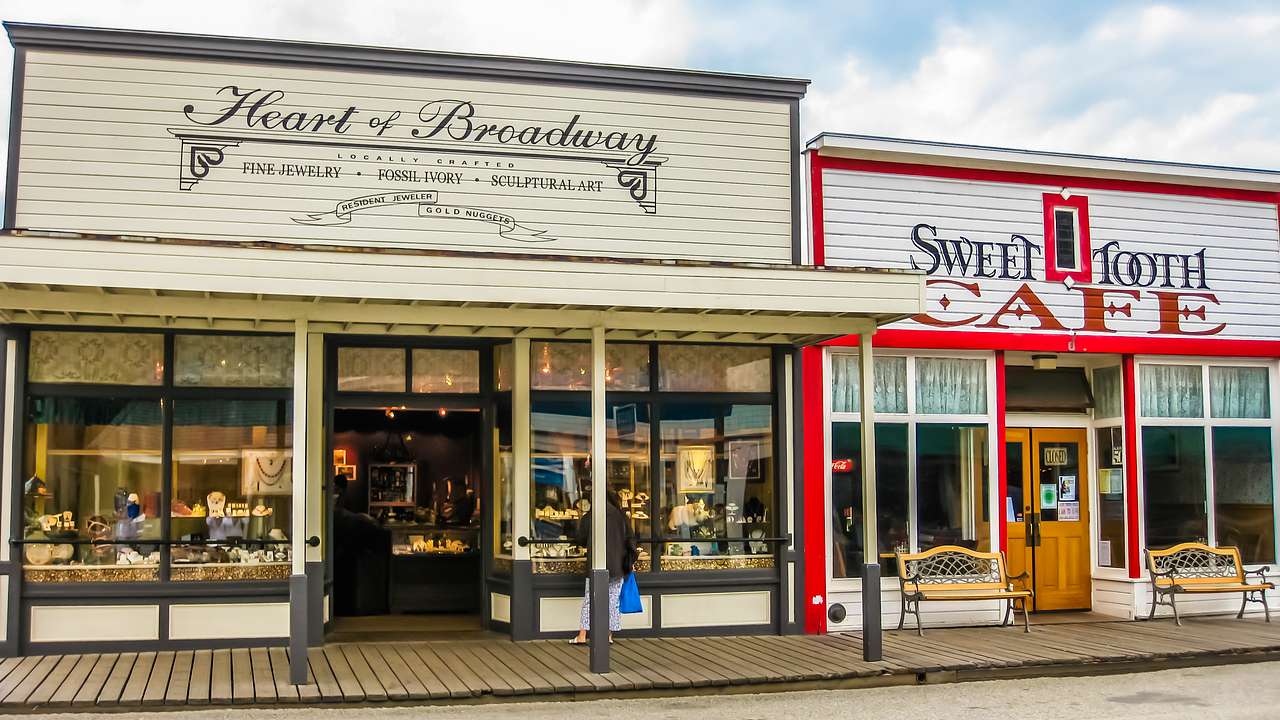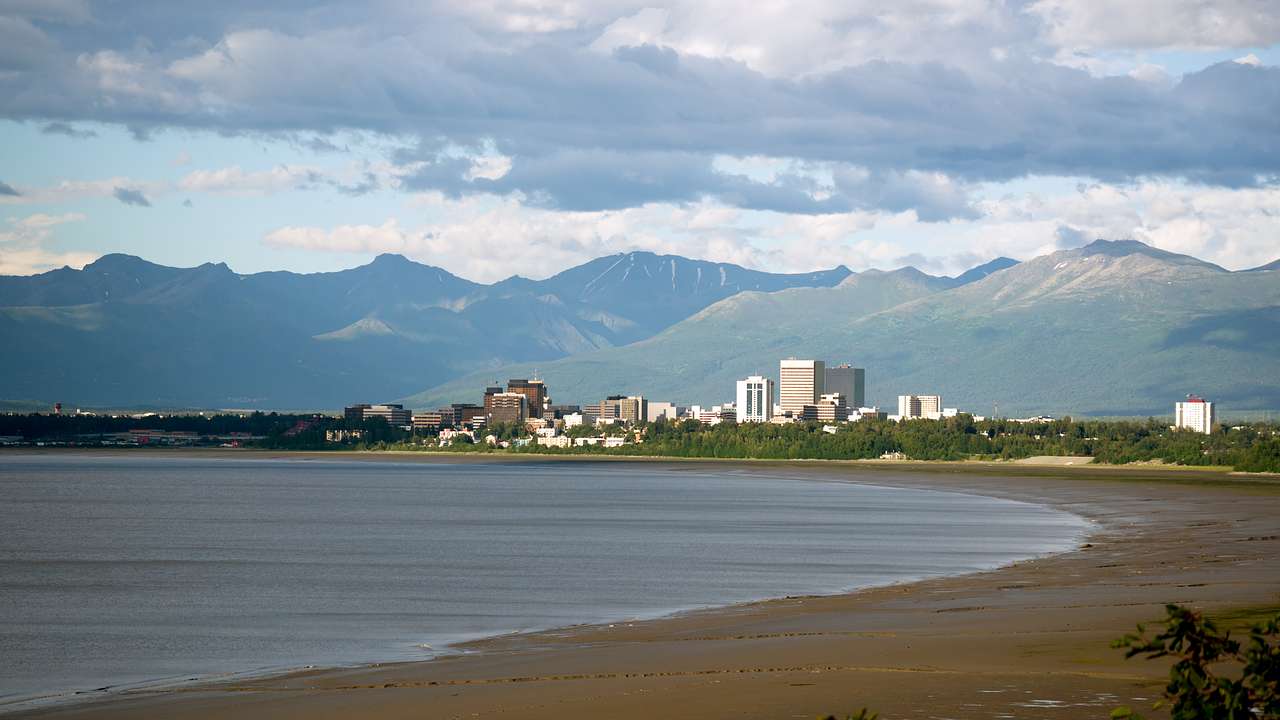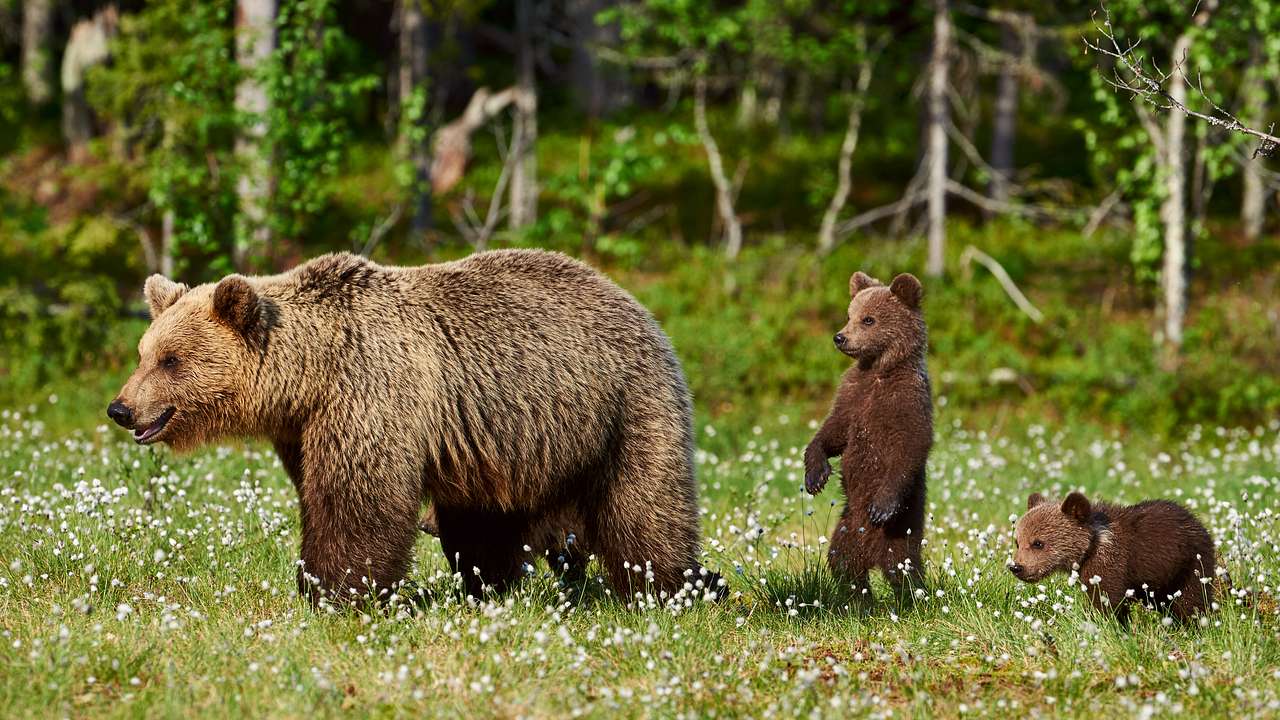50 Interesting & Fun Facts About Alaska State to Know
Destguides may receive commissions from purchases made through affiliate links in this article.
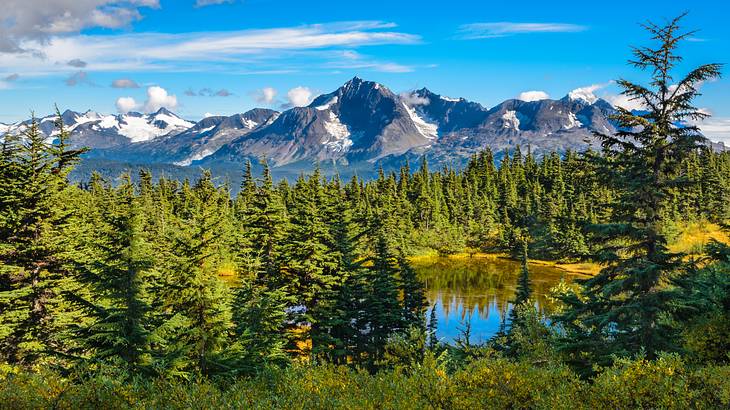
Alaska is the largest state by land area. It became the 49th state in the US in 1959, even though the land was bought from Russia in 1867. But what else is Alaska known for?
Alaska is known for its massive wilderness, which is why it is called the Last Frontier. It is also home to some of the largest US national parks.
There are 50 interesting and fun facts about Alaska state in this article, many of which you might not have known. They range from facts about the state's national parks and wildlife to its history. Keep reading to learn more!
50 Alaska State Facts
-
Fun Facts About Alaska
- The most western point in North America is on the Alaska Peninsula
- The Aleut word Alyeska is another name for Alaska
- The Iditarod Trail Sled Dog Race is an annual race in Alaska
- Alaska's nickname is the "Last Frontier"
- You can see the northern lights 243 days a year in part of Alaska
- Prudhoe Bay is the most northern point on Alaska's road system
- 17 of the 20 highest peaks in the US are in Alaska
- Seven of the top ten largest national parks are in Alaska
- The highest point in North America is Mt. McKinley in Alaska
- Only two states have a population smaller than Alaska
-
Interesting Facts About Alaska
- Barrow, Alaska, has the longest and the shortest days in Alaska
- Iliamna Lake is the largest lake in Alaska
- Prince William Sound is a 10,000-square-mile protected area
- Alaska has the lowest population density of all 50 states
- The largest national forest, The Tongass National Forest, is in Alaska
- Denali National Park and Preserve covers more than six million acres of land
- The Arctic National Wildlife Refuge is the same size as South Carolina
- Alaska is the largest state in the US by land size
- The state has more than three million lakes
- Alaska has more than 12,000 rivers
- Funny Facts About Alaska
- Weird Facts About Alaska
- Cool Facts About Alaska
- Historical Facts About Alaska
- Important Facts About Alaska
- Scary Facts About Alaska
Alaska Facts Video
Check out our highlights video of Alaska facts.
Fun Facts About Alaska
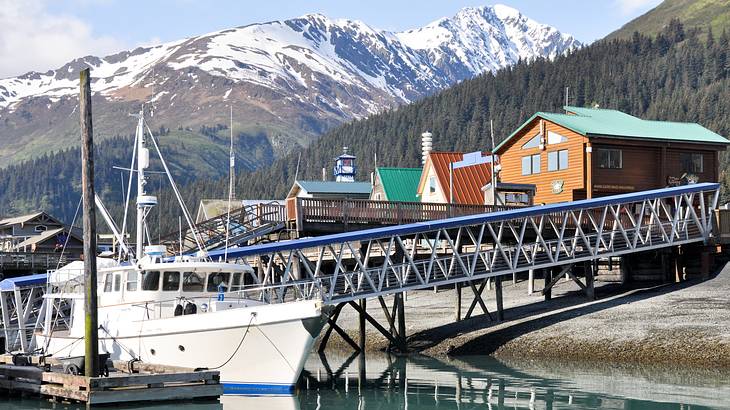
First up are ten fun facts about the state of Alaska!
The most western point in North America is on the Alaska Peninsula
The peninsula is called the Seward Peninsula, and it has more than 20,000 square miles of land. Russia is only 15 miles away from its most western point, and the peninsula spans 130 miles wide from that point.
The Aleut word Alyeska is another name for Alaska
The word Alyeska translates to "great land". The names Alyeska and Alaska come from the Aleut word "alaxsxaq," which means "the mainland." Another translation for the name is "the object towards which the action of the sea is directed," which also means mainland.
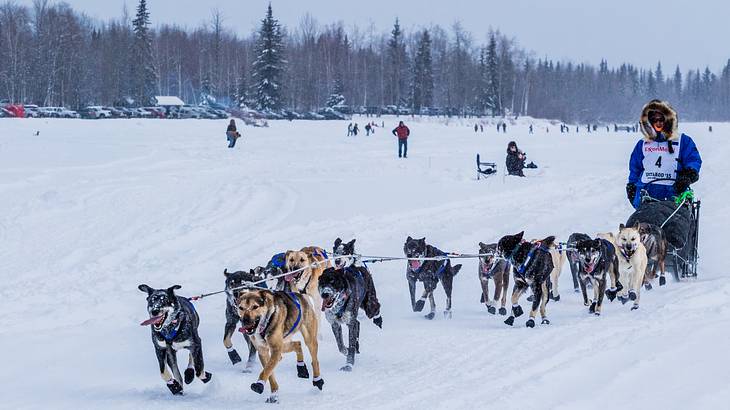
The Iditarod Trail Sled Dog Race is an annual race in Alaska
The race covers 1,000 miles throughout Alaska, a lot of it cold and rough. The Iditarod starts in Anchorage and goes to Nome, which is on the Bering Sea. The race started as a way to preserve the Alaskan huskies who run the race and the historic trail on which it takes place.
Alaska's nickname is the "Last Frontier"
This Alaska nickname comes from all the wildness that still exists in Alaska, within its frontier. There are thousands of miles within Alaska that are uninhabited and unreachable by humans. Because of this, especially in comparison to the rest of the United States, it earned the nickname.
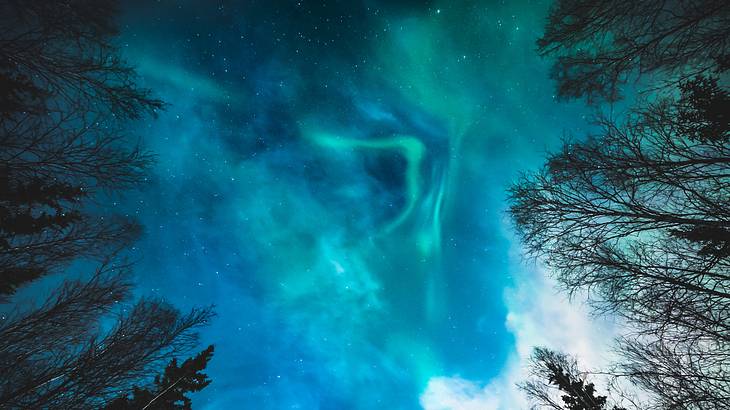
You can see the northern lights 243 days a year in part of Alaska
Fairbanks is home to the Aurora Season, which takes place from August 21 to April 21 every year. During this time, you can see the northern lights 80% of the time at night. The lights cannot be seen from the whole city, but there are viewing areas throughout the region.
Prudhoe Bay is the most northern point on Alaska's road system
The bay is part of Alaska's oil patch on the Arctic Ocean. Only oil workers and special tours are allowed near the bay. But, if you do take a tour, you'll see the oil fields in action and be able to touch or swim in the ocean.
17 of the 20 highest peaks in the US are in Alaska
The highest peak in Alaska is Mount Denali, at 20,320 feet tall. The second highest peak is Mt. St. Elias at 18,008 feet high, and Mt. Foraker is the third highest at 17,400 feet high. The other Alaskan mountain peaks in the top 20 in the US range from 14,470 feet high to 16,500 feet high.
Seven of the top ten largest national parks are in Alaska
Alaska is home to seven of the top ten largest national parks in the US. These national parks preserve Alaska's unique nature - from glaciers to geothermal hot springs.
The largest park is Wrangell-St. Elias, it is around 13.2 million acres large, equalling the size of Yellow Stone National Park, Yosemite National Park, and Switzerland combined.
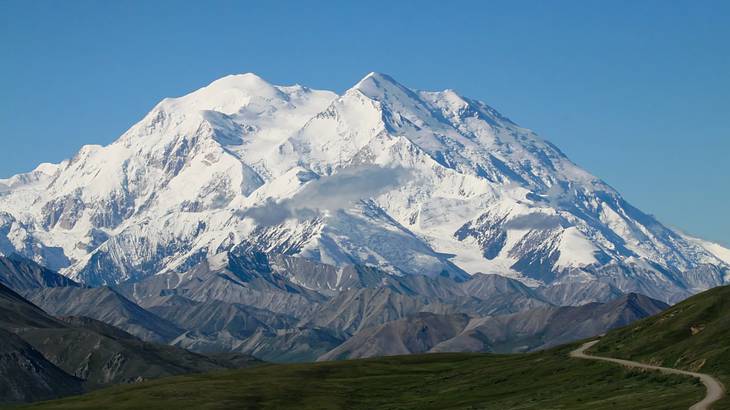
The highest point in North America is Mt. McKinley in Alaska
Today, the mountain is called Denali. The name was changed in 2016 to match the name of the park it is in. The name was changed to honor an old Indian name, Mt. Denali, which means "the Great One." Mt. Denali is one of the important landmarks in Alaska because of its history and beauty.
Only two states have a population smaller than Alaska
Alaska's population is 733,583 people, which makes it the third smallest state by population in the United States. The two smaller states are Vermont and Wyoming, which have populations of 647,064 and 581,381, respectively. The US capital of Washington DC also has a population smaller than Alaska.
Interesting Facts About Alaska
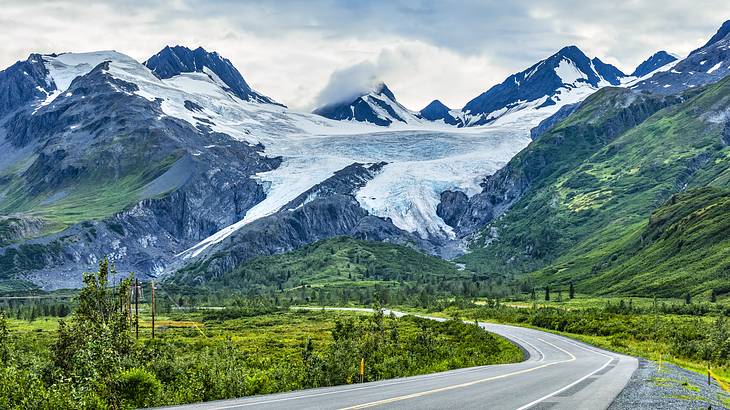
Plenty of interesting facts and information about Alaska are shared in this next section.
Barrow, Alaska, has the longest and the shortest days in Alaska
During the summer, Barrow has 84 straight days of daylight where the sun does not set. But, then, in the winter, the sun does not rise for 64 days. There is still some occasional twilight, but the sun does not come to the horizon during that period.
Iliamna Lake is the largest lake in Alaska
The freshwater lake is more than 1,000 square miles big in the southwestern part of Alaska. It is also the second largest freshwater lake in the US, after Lake Superior. The lake is also home to the world's largest sockeye salmon run.
Prince William Sound is a 10,000-square-mile protected area
The area protects some of the natural lands in Alaska, including lakes, glaciers, and fjords. There is also a lot of wildlife in the area, like whales, otters, sea lions, and seals. There are 30 land species and more than 220 types of birds in the area.
Alaska has the lowest population density of all 50 states
Alaska has 1.3 residents per square mile. Alaska's low population density is due to various factors, including its harsh climate, limited infrastructure, and remote location.
Despite its sparse population, Alaska is home to a rich diversity of wildlife and natural resources, making it a unique and essential part of the United States.
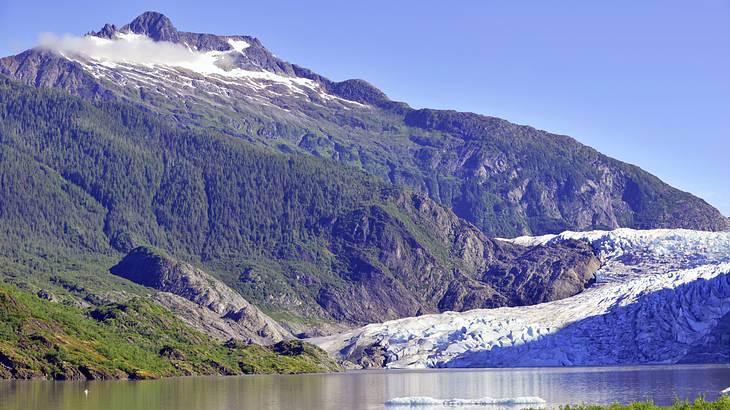
The largest national forest, The Tongass National Forest, is in Alaska
The park covers 16.7 million acres, and most of it has a rainforest climate. There is a lot of wildlife that lives in the park, including bears, salmon, and eagles.
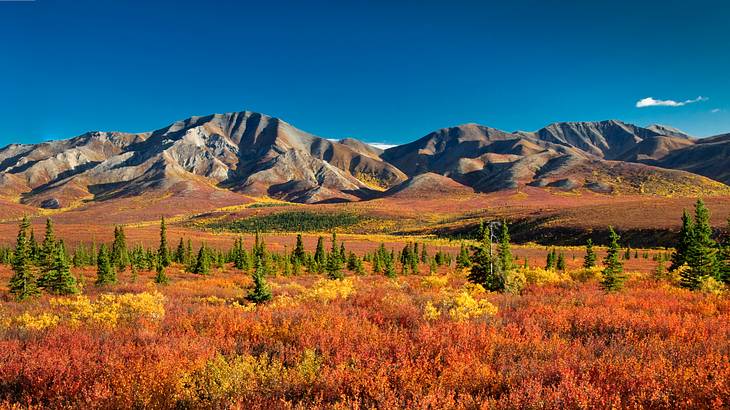
Denali National Park and Preserve covers more than six million acres of land
The park was made to protect Dall sheep who lived on the land, but it expanded to protect others over time. There are not many trails or human-made places in this West Coast National Park, and there is only one 92-mile-long road.
The Arctic National Wildlife Refuge is the same size as South Carolina
The refuge is the largest within the National Wildlife Refuge System, and there are no human-made roads or buildings within it. It is in the northeastern part of the state, and it is home to wildlife, people, and fish. The people at the refuge are Native Americans, and the sanctuary helps preserve their culture.
Alaska is the largest state in the US by land size
It is 586,412 square miles large, and it is significantly bigger than the other states. The second largest state is Texas, but Alaska is almost two and a half times bigger. You could fit Texas, California, and Montana into Alaska at the same time.
The state has more than three million lakes
The lakes make up a significant part of Alaska's water. Only lakes five acres or larger are included in this count. So small ponds are not even included in this number. The lakes are home to various animals in Alaska, and they are also a source of food and nutrition for them.
Alaska has more than 12,000 rivers
The rivers are crucial to Alaska's economy because they provide a system of moving goods and people through the state. And they are also crucial for wildlife, as many fish, birds, and other creatures live in and around the water. The rivers come from a mix of glacial and non-glacial tributaries.
Funny Facts About Alaska
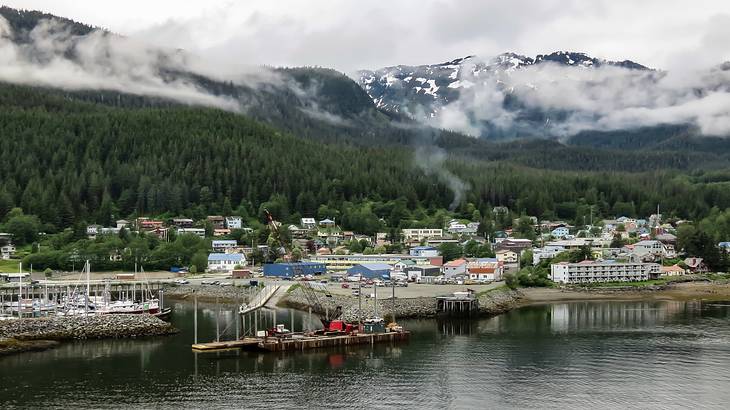
Now, onto some funny but amazing facts about Alaska.
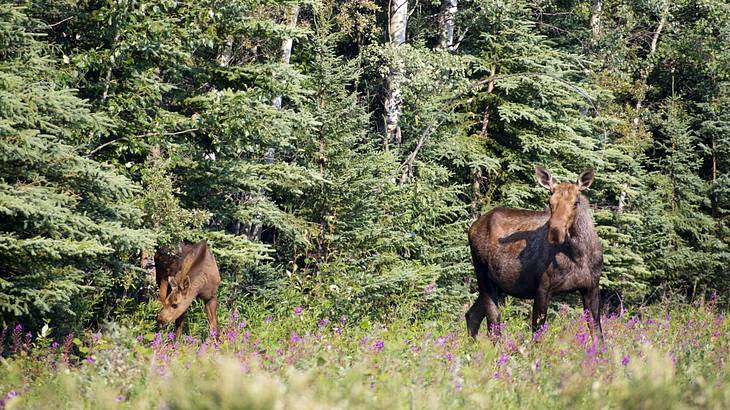
The Alaska moose is the largest species of moose in the world
These moose can weigh up to 1,600 pounds, and they usually hunt bears and wolves for food. Most Alaskan moose are in the western half of the state. The trophy size of these animals is their largest size, and they are usually 10 to 12 years old when they reach this size.
You cannot reach Juneau, Alaska by road
The only way to get to Juneau, either from the rest of the US or the rest of Alaska, is by plane or ferry. It is the only state capital that you cannot reach by road. The city itself also does not have too many roads, with the longest only spanning 50 miles.
Alaska is the only state where all its letters are on one row of an English keyboard
The four letters in the word Alaska are all in the middle row of a regular keyboard. No other state name, even the shorter ones, can be spelled using one row.
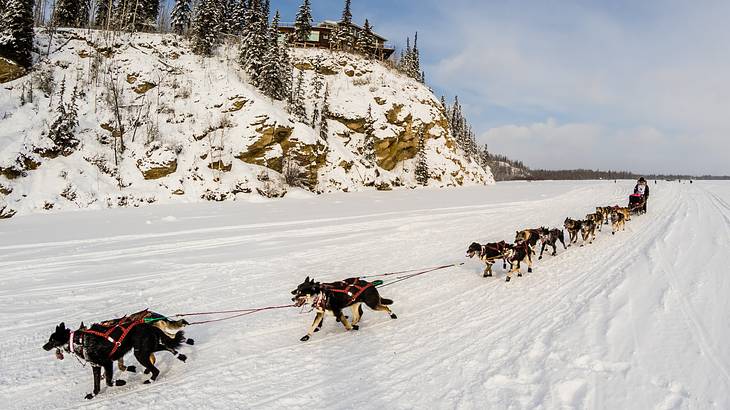
The official state sport of Alaska is dog mushing
Dog mushing used to be the primary way to get around Alaska. It was easiest before the invention of cars and planes since dogs could easily get through all the snow.
The use of dogs and sleds in this manner dates back to 2000 BC. The name comes from the French word 'marche,' meaning go, which slowly changed to 'mush' over time.
Alaska had four time zones until 1983
The number of time zones decreased to two on September 15, 1983, when Secretary Elizabeth Dole passed a plan to do so. There are still only two time zones today, and 90% of people living in Alaska follow Alaska Standard Time.
This time zone puts them two hours behind the West Coast of the United States. The other time zone is Hawaiian time, which is one hour behind Alaskan time.
Weird Facts About Alaska
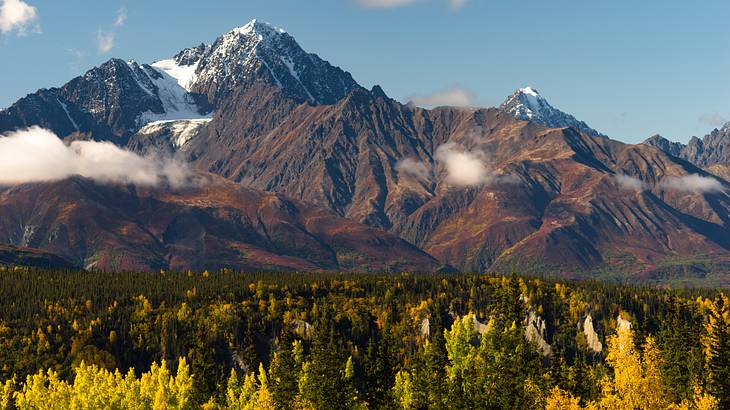
There are also some weird Alaska facts and history that you should know.
There is no state sales tax in Alaska
The state leaves taxes up to local governments, and they must decide what they want to tax and by how much. However, the state does tax certain items like alcohol, tobacco, and gas. And they do not allow states to tax certain items.
The official state fish of Alaska is the giant king salmon
These fish, also called the Chinook salmon, among other names, can weigh up to 100 pounds. It is the largest but hardest-to-catch species of salmon, which is what makes it the most wanted. It was designated the state fish in 1962.
Alaska has more coastline than the rest of the US combined
Alaska's coastline spans 6,640 miles looking at just the mainland. When you include Alaska's islands, the state has 33,904 miles of coast and shoreline. Florida has the second most coastline, but significantly less, with 1,350 miles.
Alaska has the midnight sun, which means 24 hours of daylight
The part of Alaska that lies within the Arctic Circle has 24 hours of daylight during the summer solstice. On June 20th or 21st of every year, the sun does not set below the horizon, so there is daylight all day and night long.
The Chugach National Forest in Alaska is the size of New Hampshire
The park in southern Alaska is the most northern and western national forest. It is full of salmon, glaciers, lakes, and mountains, and 30% of the park is covered in ice.
Cool Facts About Alaska
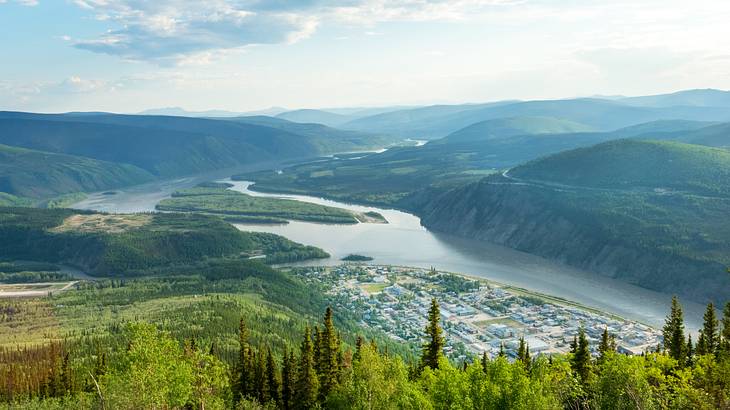
Next up, some cool Alaska facts and information.
40% of Alaska's land is made up of water
The water consists of rivers, lakes, creeks, and ponds, and they are full of fish. The salmon swim up the rivers from the ocean, bringing nutrients into Alaska's ecosystem with them. Fish are also the primary food source for many animals like bears, eagles, and people.
The third-longest river in the United States is in Alaska
The Yukon river is more than 2,000 miles long. The river is only partially in Alaska, with 1,400 miles running through the state. The rest of the river is in Canada. Part of the river runs north, but most of it runs to the west through Alaska before emptying into the Bering Sea.
Almost one-third of Alaska is in the Arctic Circle
The portion of Alaska that is in the Arctic Circle is the coldest part of the state as this is the most northern part of Earth. A lot of this third of Alaska is uninhabited, and it is hard to traverse because of its cold temperatures and rough terrain.
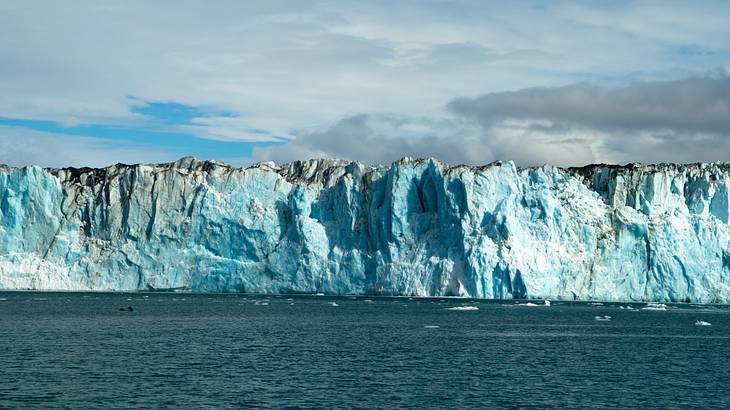
There are approximately one hundred thousand glaciers in Alaska
The glaciers come in all sizes and are all over the state. The largest glacier in Alaska is Malaspina which is 850 square miles big. There are 29,000 square miles in Alaska covered in glaciers, which is five percent of the state.
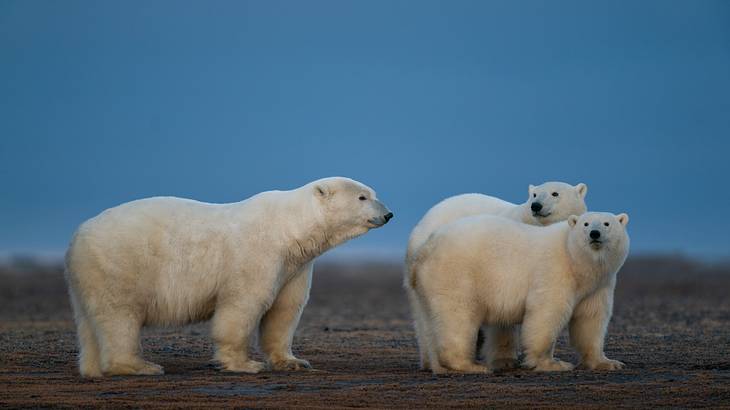
You can spot polar bears in Alaska
Polar bears can be hard to find since they spend most of their time living on sea ice. But, in Alaska, specifically in Barrow (now called Utqiagvik) and Kaktovik, you can usually spot the bears between August and October. They spend this time on the land, usually on barrier islands or looking for food.
Historical Facts About Alaska
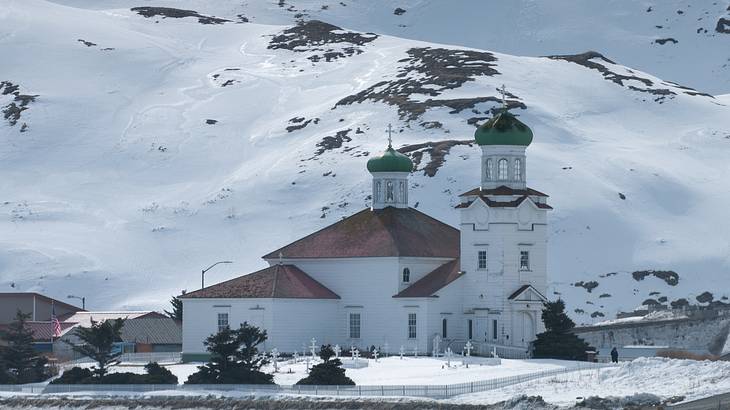
Alaska has a lot of history, so here are some history facts about Alaska.
The United States purchased Alaska for seven million dollars
Russia sold Alaska to the US on March 30, 1867. It was part of the Treaty with Russia, which was signed by Willam Seward, the United States Secretary of State, and Edouard de Stoeckl of Russia. The total cost of the transaction was $7.2 million, which came out to just two cents per acre.
The Alaska state flag was created in 1927
The flag has a lot of meaning for the state. First, the blue color is for the vast sky over the land and the color of the state's forget-me-not flower. The North Star is also on the flag, referring to it leading the state toward a promising future. And the central part of the flag is the dipper, which symbolizes strength.
Alaska became the 49th state in 1959
It was officially admitted to the union on January 3, 1959. The United States first bought the land from Russia in 1867 as part of the Treaty of Cession.
Today, the smallest distance between Alaska and Russia is only 2.5 miles. The divide is between Alaska's Little Diomede Island and Russia's Big Diomede Island.
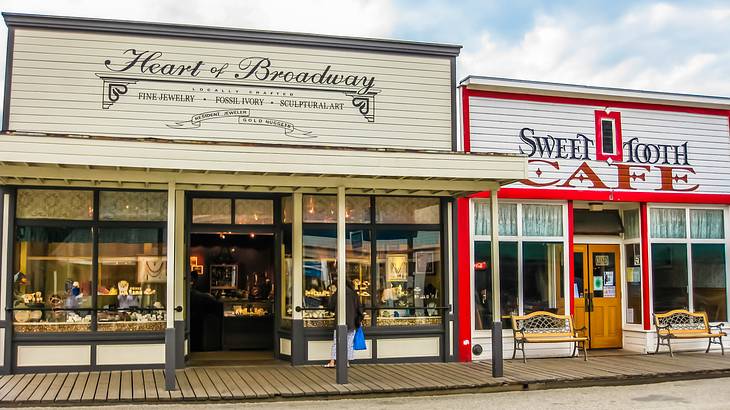
The Klondike Gold Rush brought 100,000 people to Alaska in the late 19th century
Skookum Jim started the gold rush when he and his family found gold by the Klondike River. As word spread, people rushed to Alaska from further south on the West Coast to mine for gold.
The Aleutian Islands is an archipelago of 70 islands off the coast of Alaska
The Aleutian Islands were part of the sale of Alaska from Russia to the US. They run in an arc-like shape along the Bering Sea, which is about 1,100 miles between the two ends of the arc. Some old settlements and inhabitants lived on the land for thousands of years before being discovered by Russians in 1741.
Important Facts About Alaska
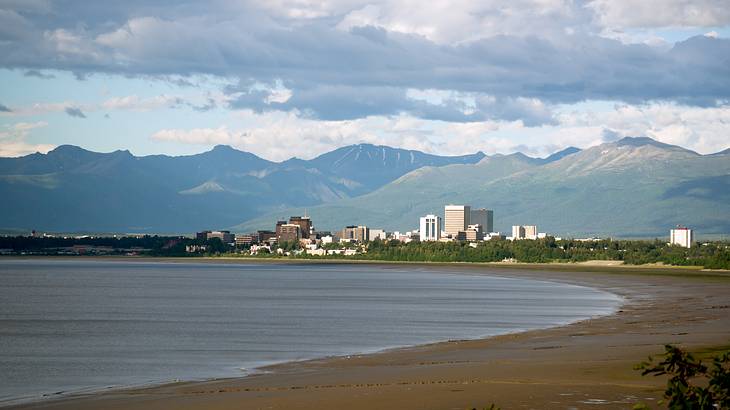
The following section focuses on the state's past with important facts about Alaska's history.
Some people did not want the US to buy Alaska
These people called the deal "Seward's Folly." So why did Russia sell Alaska to the Americans in 1867? Russia sold Alaska to the US because it was so remote from its population and hard to defend and manage.
Anchorage is the largest city in Alaska, with nearly 300,000 people
The city is in the southern part of the state. The second and third largest cities in Alaska are Fairbanks and Junea, each with around 32,000 people.
While Anchorage dominates in population size, the smaller cities and towns in Alaska are no less important, each with unique cultures and communities that contribute to the rich tapestry of life in Alaska.
Alaska has two state holidays
First, Alaska celebrates Seward's Day, which commemorates the US signing the treaty to buy Alaska from Russia. They celebrate this on the last Monday in March, even though the treaty was signed on March 30.
The second state holiday is Alaska day, which celebrates when the territory was officially transferred to the US in 1867. This holiday is on October 18 every year.
Alaska natives make up 15% of the population
The Alaskan natives are the people who originally occupied the land thousands of years ago. They came to the land from Asia, and their descendants still live on the land today. The Alaskan Natives live in tribes, and there are more than 200 of them in the state.
A quarter of jobs in Alaska come from the oil industry
Half of the state's spending revenue comes from the oil industry. In 1988, one-fourth of the oil produced in the US came from Alaska, but it has slowly decreased, and today it is closer to three or four percent.
The decrease in oil production is due to the lack of oil in the Trans-Alaska Pipeline System, which is down to 25% of previous production levels.
Scary Facts About Alaska
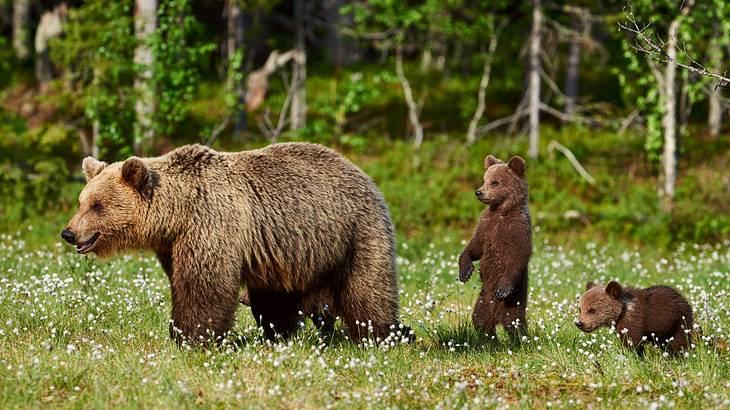
Finally, below, you will find some scary but interesting things about Alaska.
The only World War II battle in the US was in Alaska
The battle took place on the Aleutian Islands, and it was called the Battle of Attu. Japanese forces invaded Alaska from June 3rd-7th, 1942. The Japanese took 40 prisoners during the attack, and 16 of them died.
The US army arrived back on the island on May 11, 1943. The fighting lasted until May 30, when the US took back the land, and most of the Japanese soldiers were dead.
Alaska has a huge bear population
There are so many bears in this state. Katmai National Park & Preserve in Alaska has one of the largest grizzly bear populations in the world. The bears live there because of the high population of salmon, which is one of their primary food sources.
The second strongest earthquake ever happened in Alaska
On March 27, 1964, an earthquake with a magnitude of 9.2 occurred in Alaska's Prince William Sound region. It lasted for four minutes, and it was only smaller than the 9.5 magnitude earthquake that took place in Chile four years prior.
Prospect Creek Camp in Alaska is the coldest place in the world
On January 23, 1971, the coldest day and place on record was recorded at Prospect Creek Camp. That day's low temperature was only negative 80 degrees Fahrenheit, which is still the coldest ever. And the highest temperature that day was only 64 degrees Fahrenheit.
There are over 130 active volcanoes in Alaska
Ninety of the volcanoes have been active in the last ten thousand years, with half of those being active since 1760. The most active volcanoes are in the Wrangell Mountains and on the Aleutian Islands. Over 75% of the volcanoes that have erupted in the United States in the last two centuries have been in Alaska.
Conclusion
The facts above prove that Alaska is diverse, from its land, which is made up of 40% water, to its high mountains. People love learning about this great state, like that there is no sales tax, and summer days can last as long as 84 days. Hopefully, this article helped to sharpen your Alaska trivia skills!
Want to keep exploring?
Subscribe for discounts on tickets and hotels and our latest guides.
Thank you for subscribing
We will be in touch soon with discounts on tickets and hotels and our latest guides.
Want to keep exploring?
Subscribe for discounts on tickets and hotels and our latest guides.
Thank you for subscribing
We will be in touch soon with discounts on tickets and hotels and our latest guides.

